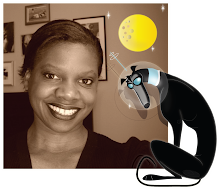
Ever hear the saying "the more you know, the more you don't know?" I learned this first hand as a grad student. After nearly five years of never ending articles and text books, what did I learn? I learned that all that reading may result in a little bit of knowledge, but it's more likely to simply generate more questions... which stimulates more reading.. you get the picture. To some, this might be utterly frustrating. Not for me. This is why I love what I do, and it's one of the things I love about Illustrator. After two years, I'm still learning new things.
Then there are the applications that I do know, but repeatedly fail to take advantage of (I've been known to be slightly stubborn). Above represents a finished project, complete with the pencil sketch I started with. The ability to use layers is probably one of the more powerful tools in Illustrator. However, this image represents ONE big layer. No real explanation there. Also, Illustrator allows you to use an existing pencil sketch, and then literally work over top of it. Not me. The inset pencil sketch was simply drawn as a reference. I subsequently went into Illustrator and literally recreated it. What can I say? Sometimes I'll admit to re-inventing the wheel, simply because it works for me.
While we're on the subject of learning Illustrator, the first thing I did when I purchased it was to invest in a good book. I'll admit to buying a standard CS2 manual. You know the kind. At least 500 plus pages of (not always useful) information. My best investment as a beginner was Cross and Kloskowski's Illustrator CS2 Killer Tips. This compact book is definitely worth the investment if you're new to Illustrator.


No comments:
Post a Comment